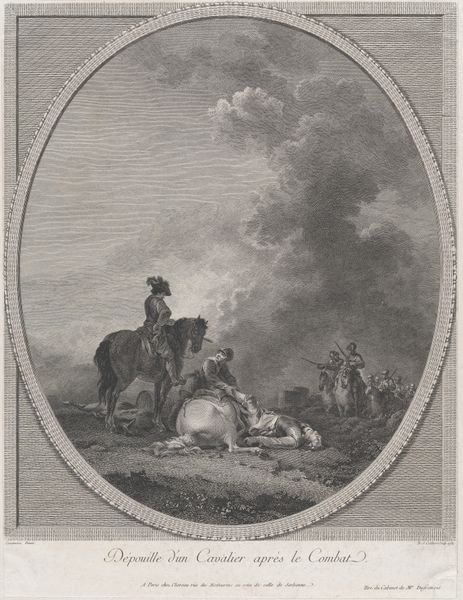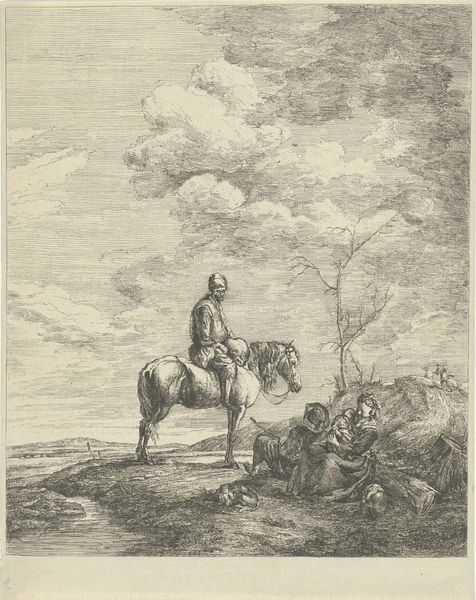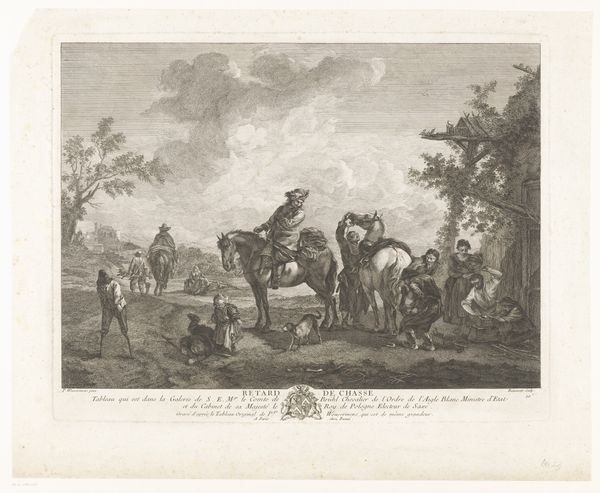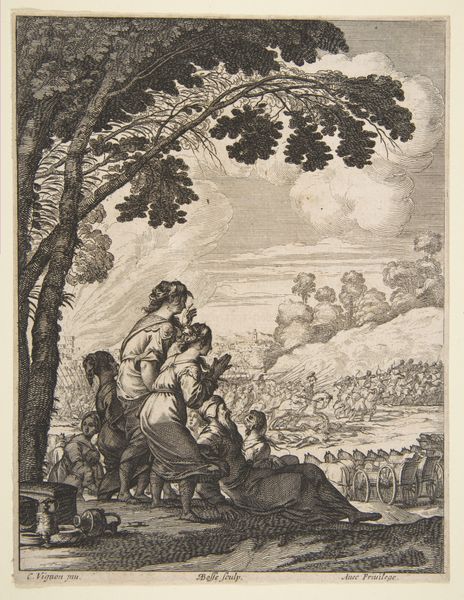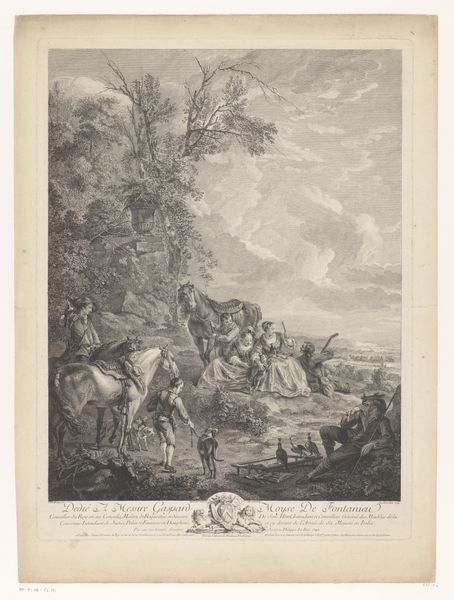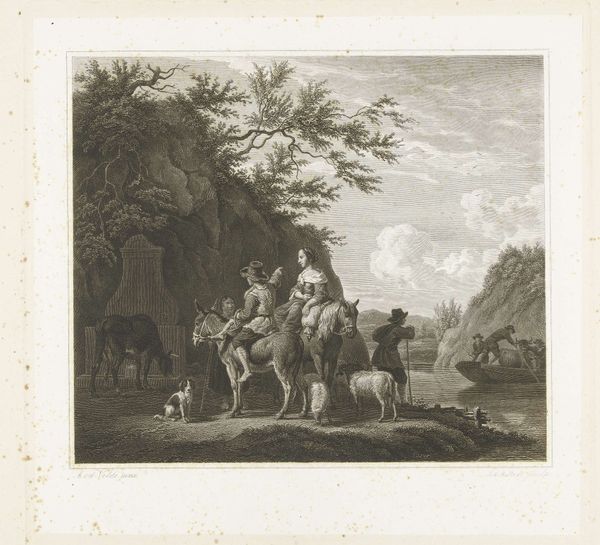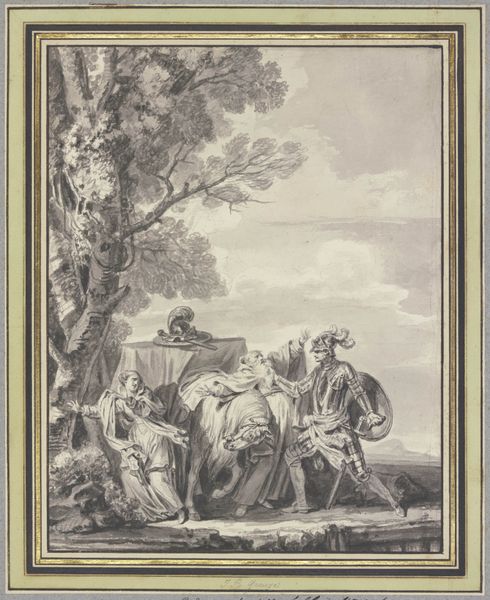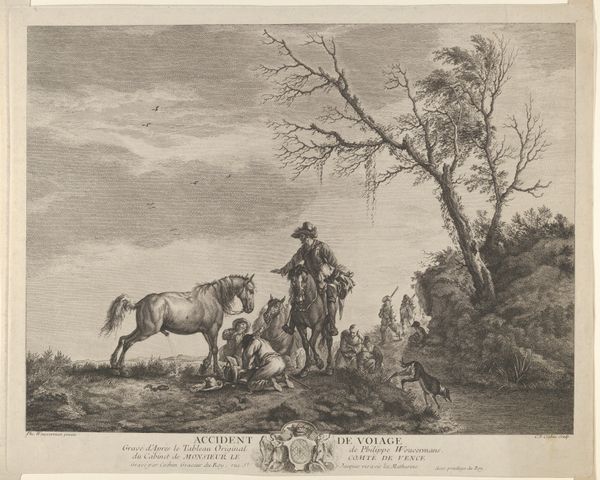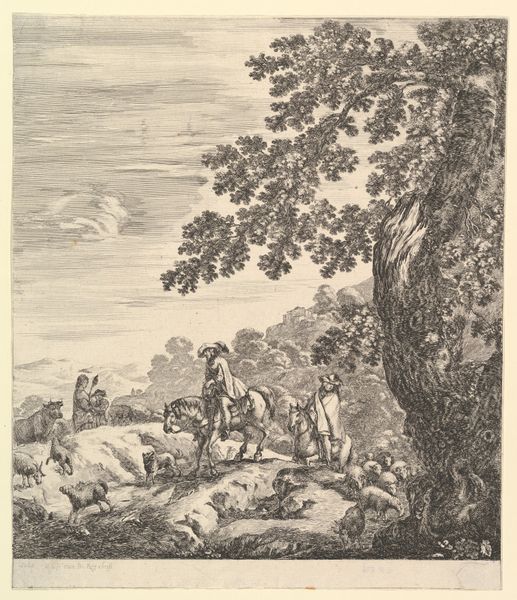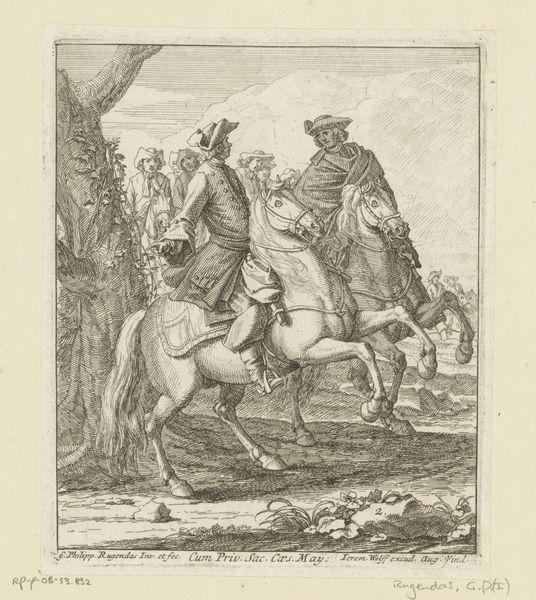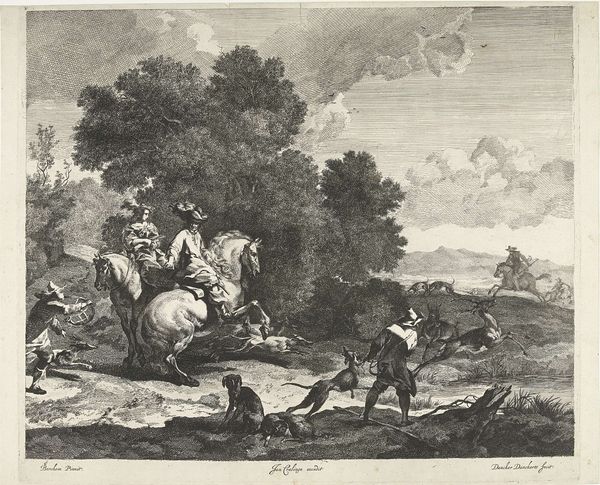
Dimensions: Sheet (trimmed): 15 3/4 × 12 1/16 in. (40 × 30.6 cm)
Copyright: Public Domain
Curator: This is Nicolas Colibert's "Return from the Game Hunt," a captivating engraving from 1786. Editor: The immediate feeling is pastoral, almost theatrical. It is delicately balanced but contained. Note the oval frame; the figures seem poised on a stage. Curator: Absolutely, and understanding the socio-political context is key. Colibert, working in late 18th-century France, depicts an aristocratic pursuit. The hunt was intrinsically linked to power, privilege, and land ownership—all fraught issues at that time. Editor: Intriguing. From a formal perspective, look at how the light guides the eye. It subtly illuminates the central figures and creates depth, accentuating their importance within the landscape. The composition is ingeniously constructed using lines and soft shadow, emphasizing their leisurely lifestyle. Curator: Exactly. These figures are returning to a building with land workers visible around it, which visually establishes the hierarchies of class, reflecting larger concerns of social and economic justice. The dogs, horses—these were status symbols of a certain class allowed to move in and out of spaces as they wished while so many others could not. Editor: It's masterful how Colibert uses engraving to emulate the textures and atmosphere; observe the cloudy sky and the musculature of the horses. The eye moves effortlessly from detail to detail in the landscape. Semiotically, there is also an almost allegorical theme when reading across the symbolism in these images, which helps define class divisions. Curator: And even the return signifies something. The hunt—a space of sanctioned violence and domination over nature, performed by a class that already dominates society. It highlights the casual, unexamined cruelty embedded in social practices, as a way to visually underscore the plight of peasantry under a careless landed gentry. Editor: I’m struck again by the frame. It constrains the figures within the art, and makes you consider its structural relevance within the context, as you’re describing. Perhaps an intentional detail reflecting both the aesthetic sensibilities and structural hierarchies that held late 18th-century French society together. Curator: Precisely, there's so much packed within this seemingly innocuous genre scene! The layers of privilege and inequity invite ongoing analysis and discourse, and in doing so provide a richer perspective through a modern lens. Editor: A wonderful piece, whose simple formal structure allows deep historical analysis—it leaves me wanting to explore more rococo works with similarly interesting subtexts.
Comments
No comments
Be the first to comment and join the conversation on the ultimate creative platform.
